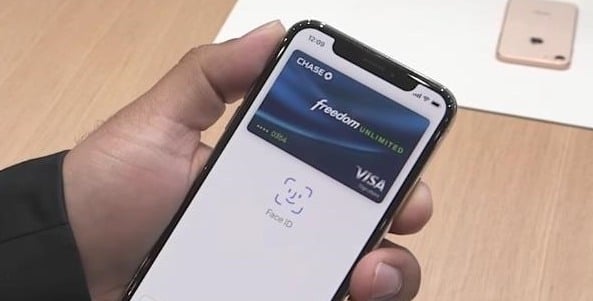
Finally putting Face ID and Touch ID to the test in real world purchasing scenarios, it all comes down to preference.
I live in a place that’s not exactly a big city, but isn’t a small town, either. It resides in that gray area. As a result, a lot of the businesses around me haven’t quite jumped on the mobile payments bandwagon.
The bigger establishments, which are linked to nationwide chains, are the only guaranteed spots. But so far, when I find a place that supports Apple Pay, I’m generally more surprised than I should be, considering how much the mobile payment option has rolled out since its debut.
I tend to go back to those places more often than not, too. I want to use Apple Pay as often as I can, because using the chip embedded in a plastic card is annoying and can take inordinately long. But Apple Pay is quick and easy. At least now it is. When it first arrived here, a lot of places, even McDonald’s, didn’t quite train employees on what to expect, so the use cases back then were pretty rough.
It has smoothed out now, though. So where Apple Pay (and other mobile payment options) are supported, it is usually straightforward and fast. The way checking out should be.
Which is one of the reasons why I was so skeptical about Face ID when Apple unveiled it as the go-to biometric security measure in the iPhone X. Apple did what it always does and sold folks on the technology, leaning on its ease of use and its inherent security, but I couldn’t help but keep envisioning pulling out my phone, holding it up to my face so it could verify my identity, and then putting it down the terminal to pay with Apple Pay.
That didn’t sound like an easier solution to the situation, which is why it confused me that Apple felt the need to “fix it.” Touch ID wasn’t broken. And using Touch ID to confirm an Apple Pay purchase was certainly not lacking in functionality and ease. So why change it?
Well, Apple sees Face ID as the next big thing, and of course they would: They invested quite a bit in the TrueDepth camera technology that makes it work, and, with the design of the iPhone X –and its lacking the Home button– this was the only option they wanted to go with. And while I had my reservations I obviously had to try it out before I could form any final judgment.

As it stands right now, I still prefer Touch ID for making Apple Pay transactions out in the real world. When I have to hold my phone near a terminal to pay for something. Being able to just quickly pull my phone out of my pocket, double tap the Home button, and be done is pretty simple. In the times that I’ve used Face ID to pay for something, it hasn’t necessarily been a frustrating experience, but I do still feel like I’m throwing in an extra movement in there when I have to hold the phone so that Face ID can verify it’s me trying to buy something.
The first time I tried it, there was some kind of delay between Face ID confirming it was me and me putting the phone near the payment terminal. While the camera confirmed it was me initially, when I put the phone near the terminal it had apparently forgotten, so I had to verify my face again.
That hasn’t happened again, thankfully.
But I can still say with confidence that, as of right now at least, and generally speaking, I still prefer using Touch ID for Apple Pay transactions out in the wild.
However, using Face ID for purchases on the phone, like from the iOS App Store, is awesome. While using Touch ID is still easy in this regard, and Face ID has me double clicking a button (the side button) to confirm a purchase, the process is simple and fun.
The difference between the two is probably timing. When you’re out there in the wild paying for something, like a sandwich or what not, you don’t want to hold up anyone else that might be around. At least I know I don’t. So whether that’s the person selling me the food who has to wait for Face ID/Touch ID/Apple Pay to work before they can move on, or a person in line behind me, you want that technology to work flawlessly and as smoothly as possible so you can get going. The fact that the process is essentially the same when using Face ID for an App Store purchase, but there’s no one waiting for you, probably has a lot to do with it.
Still, based on my usage I think I would prefer to use Touch ID right now when making Apple Pay purchases out in the wild. That will probably change in due time the more I use Face ID and just get used to something else instead of a fingerprint reader. It would’ve been cool to have both choices, though.
Have you used Face ID to verify an Apple Pay purchase at a restaurant or store yet? How was your experience? Do you prefer Touch ID for situations like that over Face ID, or are you all-in with Apple’s new biometric security option?